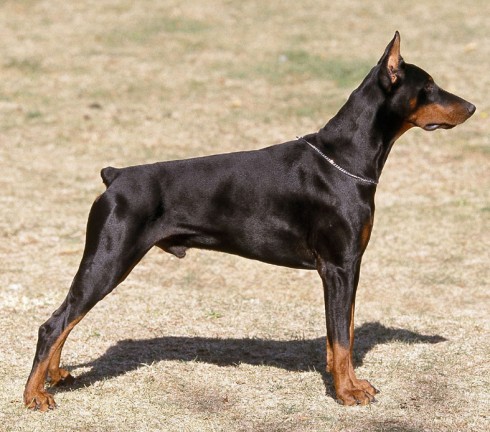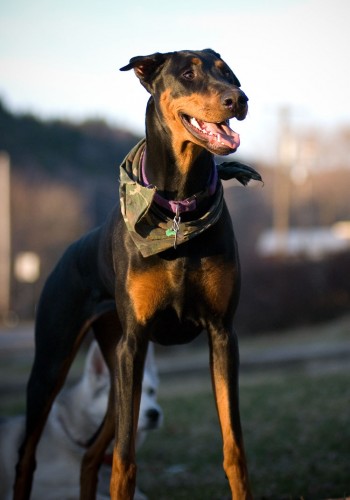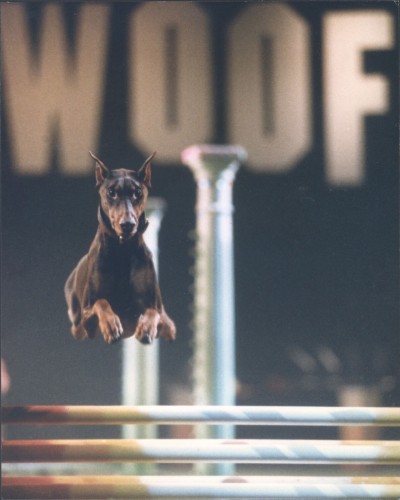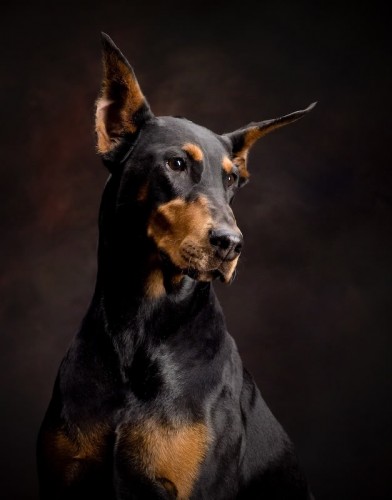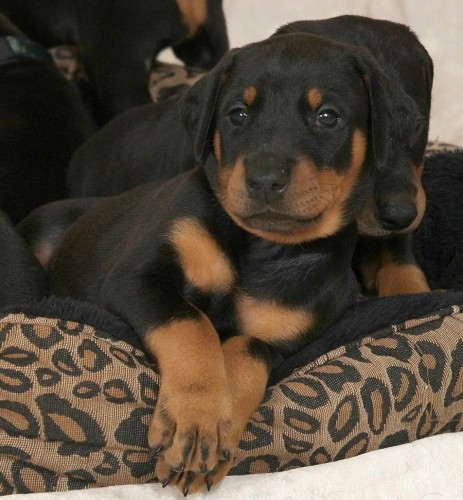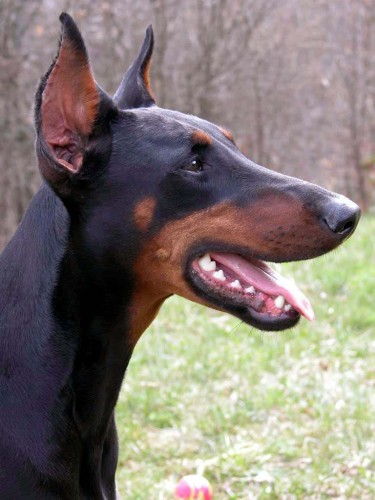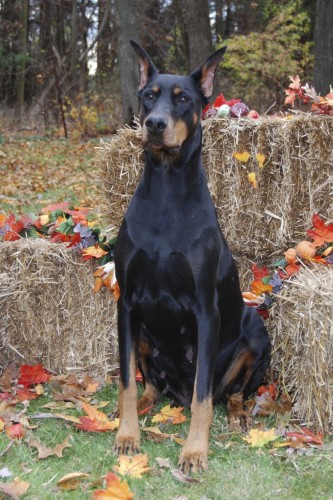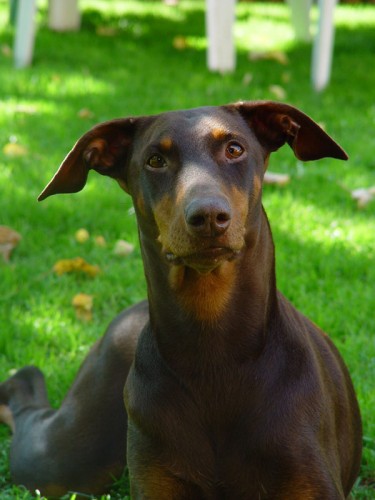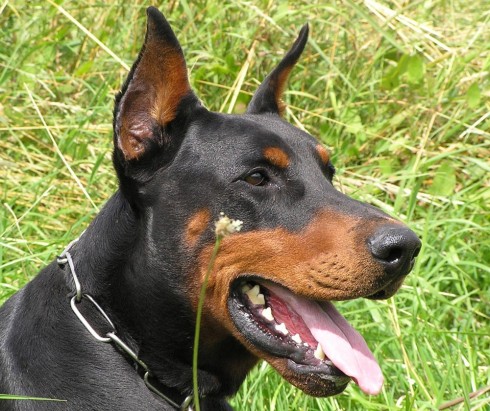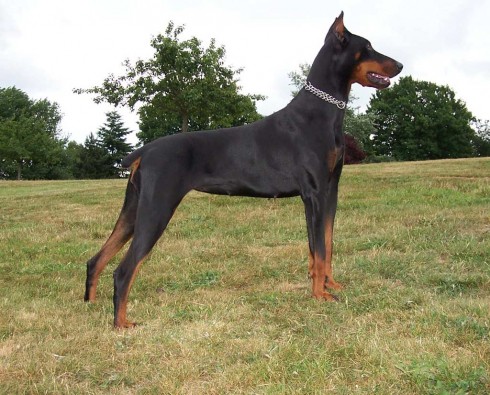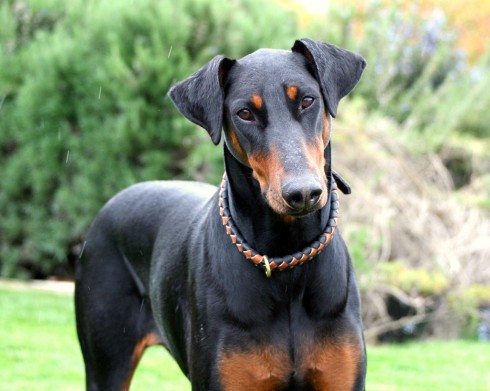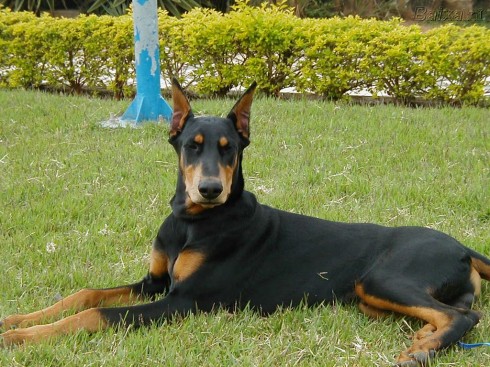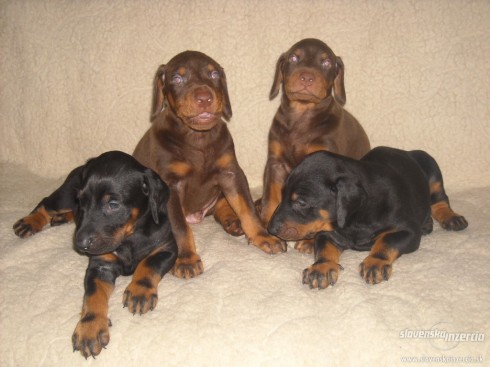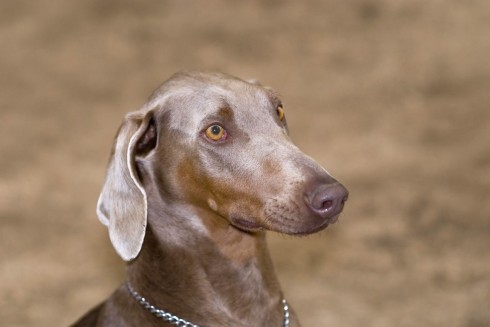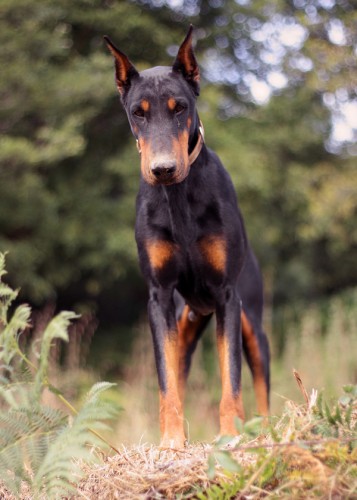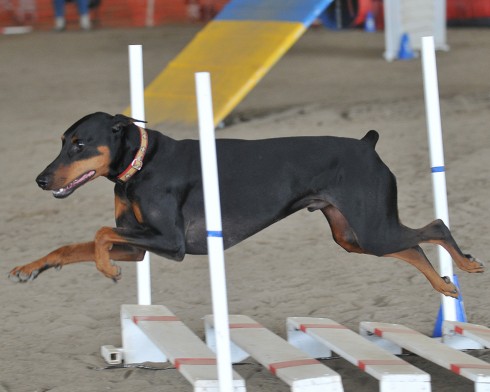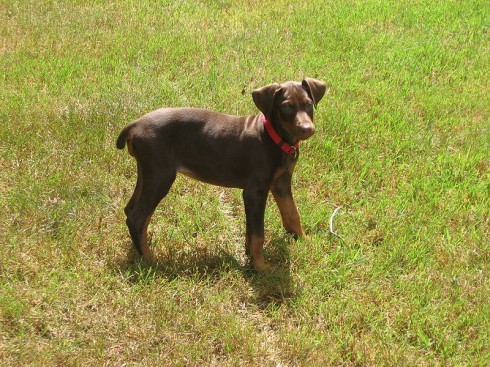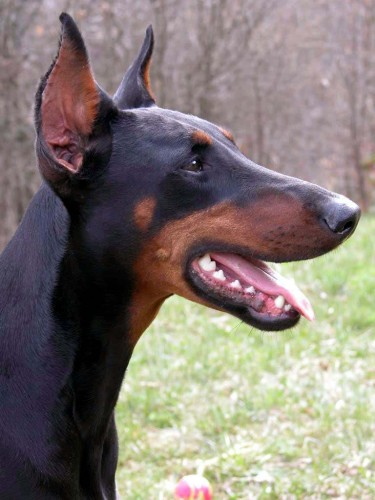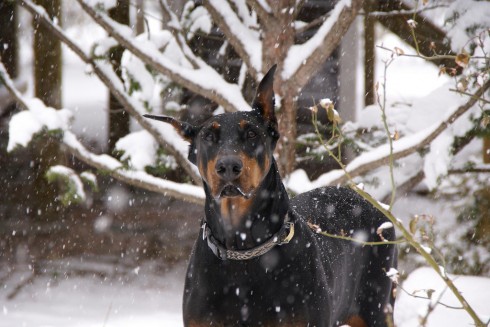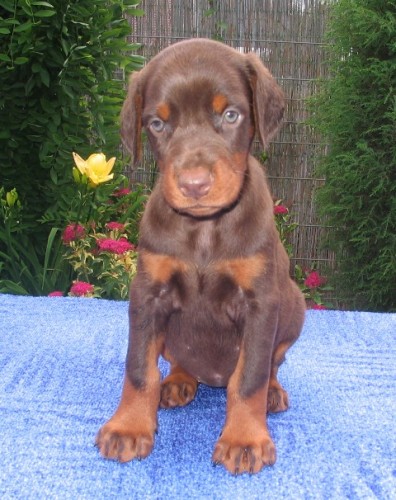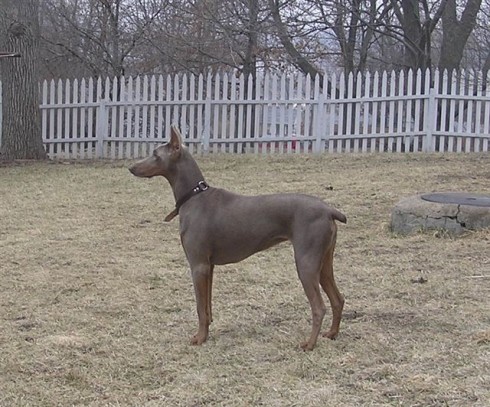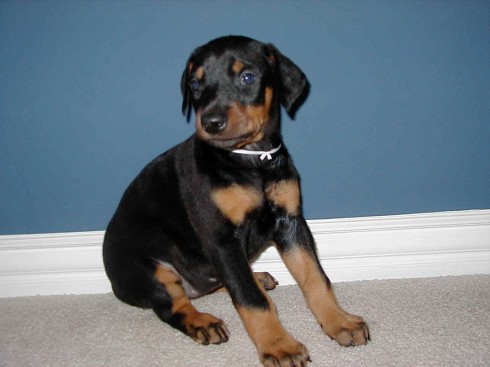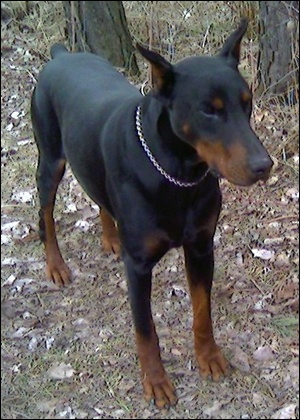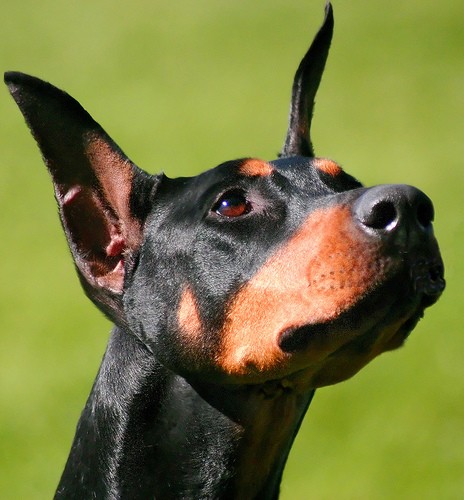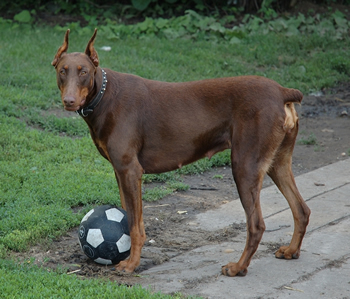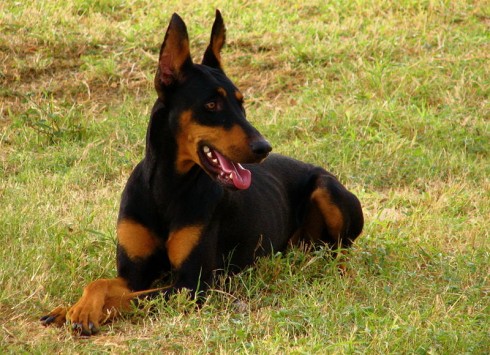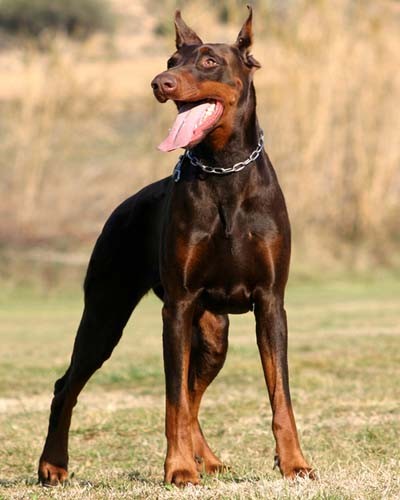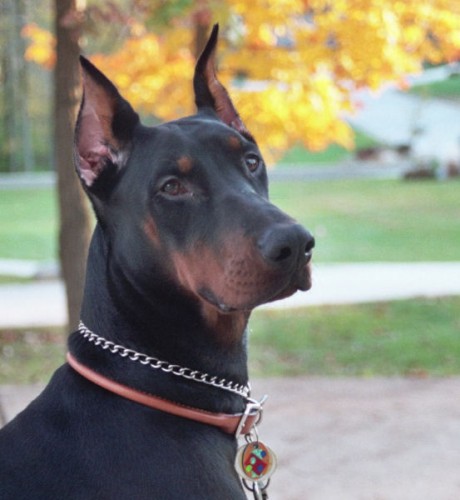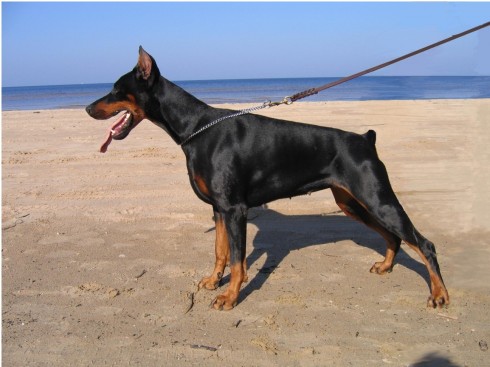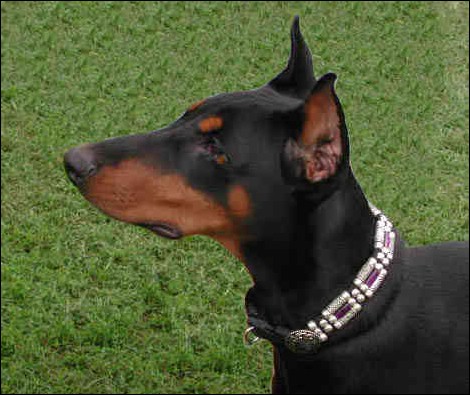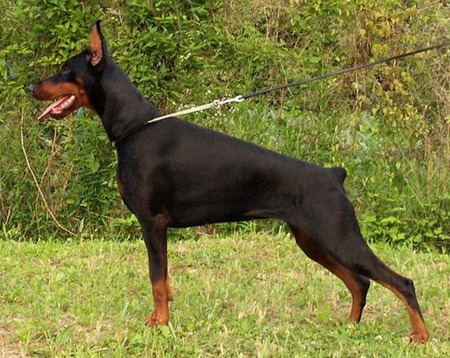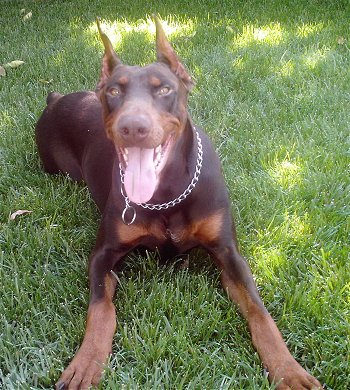Main Index
In Store
Our Web Store
Miniature Schnauzer Picture Gallery
Latest Dog Blogs
- What Are The Basic Commands To Train A Dog?
- PaySafe As The Most Popular Type Of Deposit
- Everything You Need To Know About Pet Sales
- Dogs Contribute To Our Physical And Mental Well Being
- How To Choose Where To Bet On Greyhounds In 2022
- Volunteer With Animals - How To Help Dogs Around The World
- Basic Understanding Of The House Edge
- Why You Should Get A Dog
- Top 20 Popular Dog Names Around The World
- Constipation in Dogs and How to Find Solutions
Dobermann Pinscher
Dobermann Pinscher Picture Gallery
Dobermann Pinscher Clubs/Associations
The Full Dobermann Pinscher Description
Doberman Pinschers combine a graceful appearance with a sharp intelligence. These are strong, quick-thinking dogs who have always served people as guardians and companions. Their ability to respond immediately to danger has made them one of the most reliable of all dogs.
Did you know?
The Doberman Pinscher was developed in Germany by Louis Dobermann in the 1890's.
"Always Faithful," a life-size Doberman in bronze, is located in Guam at the war dog cemetery at the U.S. naval base in Orote Point as a permanent monument.
So you want to own a Doberman Pinscher?
Dobermans are easy to teach and quick to learn. If you do not have time to properly train your Doberman you should consider a different breed.
The Doberman Pinscher is an energetic, elegant, fearless, loyal, and obedient dog who will make a devoted companion.
Indicative Breed Standard
General Appearance
Medium size, muscular and elegant, with well set body. Of proud carriage, compact and tough. Capable of great speed.
Characteristics
Intelligent and firm of character, loyal and obedient.
Temperament
Bold and alert. Shyness or viciousness very highly undesirable.
Head and Skull
In proportion to body. Long, well filled out under eyes and clean cut, with good depth of muzzle. Seen from above and side, resembles an elongated blunt wedge. Upper part of head flat and free from wrinkle. Top of skull flat, slight stop; muzzle line extending parallel to top line of skull. Cheeks flat, lips tight. Nose solid black in black dogs, solid dark brown in brown dogs, solid dark grey in blue dogs and light brown in fawn dogs. Head out of balance in proportion to body, dish-faced, snipy or cheeky very highly undesirable.
Eyes
Almond-shaped, not round, moderately deep set, not prominent, with lively, alert expression. Iris of uniform colour, ranging from medium to darkest brown in black dogs, the darker shade being more desirable. In browns, blues, or fawns, colour of iris blends with that of markings, but not of lighter hue than markings; light eyes in black dogs highly undesirable.
Ears
Small, neat, set high on head. Normally dropped, but may be erect.
Mouth
Well developed, solid and strong with complete dentition and a perfect, regular and complete scissor bite, i.e. upper teeth closely overlapping lower teeth and set square to the jaws. Evenly placed teeth. Undershot, overshot or badly arranged teeth highly undesirable.
Neck
Fairly long and lean, carried with considerable nobility; slightly convex and in proportion to shape of dog. Region of nape very muscular. Dewlap and loose skin undesirable.
Forequarters
Shoulder blade and upper arm meet at an angle of 90 degrees. Shoulder blade and upper arm approximately equal in length. Short upper arm relative to shoulder blade highly undesirable. Legs seen from front and side, perfectly straight and parallel to each other from elbow to pastern; muscled and sinewy, with round bone in proportion to body structure. Standing or gaiting, elbow lies close to brisket.
Body
Square, height measured vertically from ground to highest point at withers equal to length from forechest to rear projection of upper thigh. Forechest well developed. Back short and firm, with strong, straight topline sloping slightly from withers to croup; bitches may be slightly longer to loin. Ribs deep and well sprung, reaching to elbow. Belly fairly well tucked up. Long, weak, or roach backs highly undesirable.
Hindquarters
Legs parallel to each other and moderately wide apart. Pelvis falling away from spinal column at an angle of about 30 degrees. Croup well filled out. Hindquarters well developed and muscular; long, well bent stifle; hocks turning neither in nor out. When standing, hock to heel perpendicular to the ground.
Feet
Well arched, compact, and cat-like, turning neither in nor out. All dewclaws removed. Long, flat deviating feet and/or weak pasterns highly undesirable.
Tail
Customarily docked.
Docked: Docked at 1st or 2nd joint. Appears to be a continuation of spine without material drop.
Undocked: Appears to be a continuation of spine without material drop, or slightly raised when the dog is moving.
Gait/Movement
Elastic, free, balanced and vigorous, with good reach in forequarters and driving power in hindquarters. When trotting, should have strong rear drive, with apparent rotary motion of hindquarters. Rear and front legs thrown neither in nor out. Back remains strong and firm.
Coat
Smooth, short, hard, thick and close-lying. Imperceptible undercoat on neck permissible. Hair forming a ridge on back of neck and/or along spine highly undesirable.
Colour
Definite black, brown, blue or fawn (Isabella) only, with rust red markings. Markings to be sharply defined, appearing above each eye, on muzzle, throat and forechest, on all legs and feet and below tail. White markings of any kind highly undesirable.
Size
Ideal height at withers: dogs: 69 cms (27 ins); bitches: 65 cms (251/2 ins). Considerable deviation from this ideal undesirable.
About Our Article Directory
- Article
- 27 November 2010
- 2 comments
Bloat And Dog Food - Is There A Connection?
- Breed Article
- 26 November 2010
- No comments
Guard Dogs - The 6 Best Breeds to Protect Your Home and Family
- Breed Article
- 1 November 2010
- 1 comment
Canis lupus familiaris
- Breed Article
- 29 May 2010
- No comments
Hypertrophic Osteodystroph (HOD)
- Article
- 31 January 2010
- No comments
Quick Search
Donate
Latest Dog Pods
- Tips on How to Stop Your Dog from Biting
- Beware - Not All Advertised Dog Rescues Really Are! How Can You Know The Truth?
- Helpful Tips For Dog Obedience Problems
- How to Keep Dogs From Eating Poop
- Dog Grooming Tips - A General Overview of the Very Basics of Dog Grooming
- Recognising Different Types of Dog Obedience Problems
- 5 Important Tips On Feeding A Puppy


